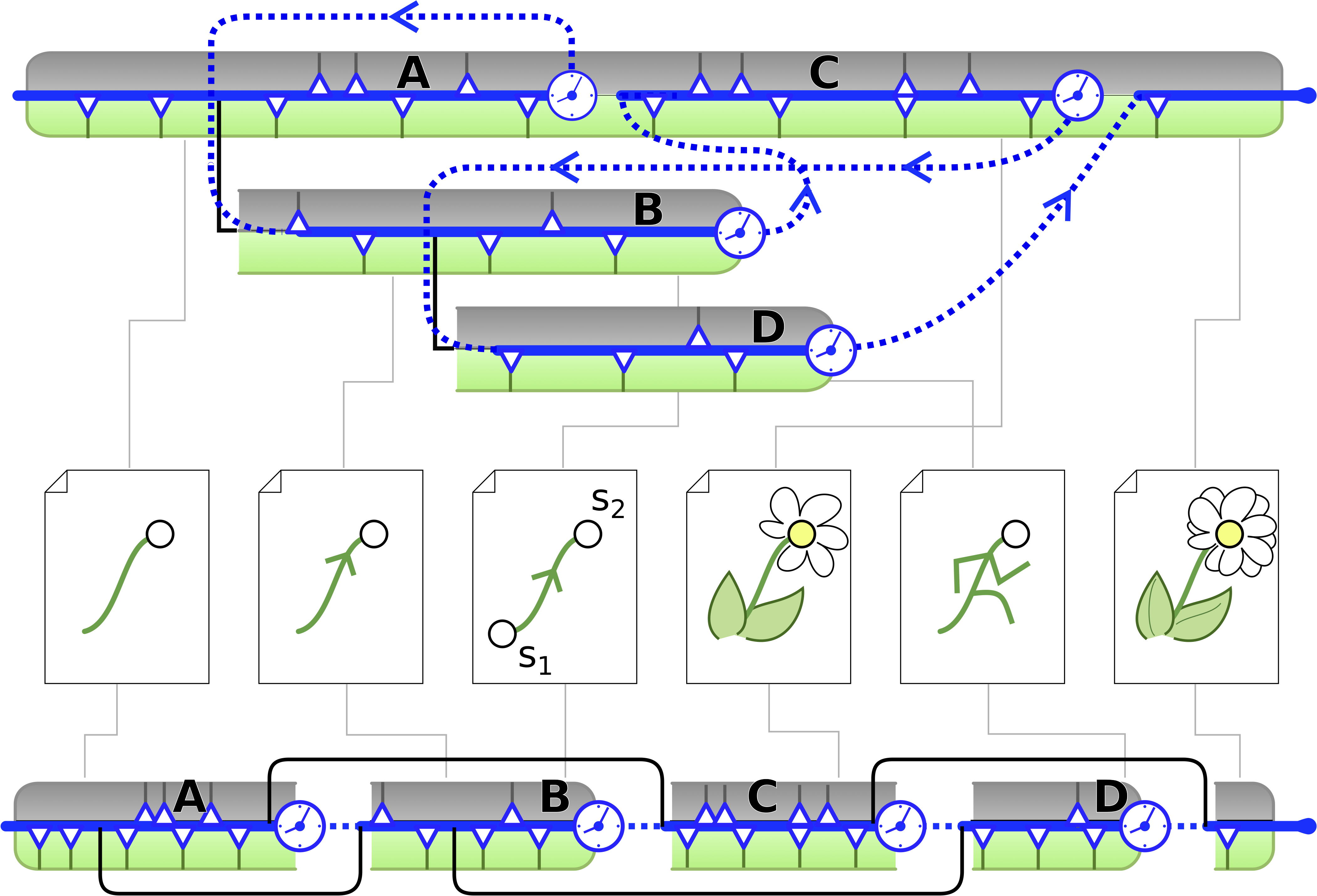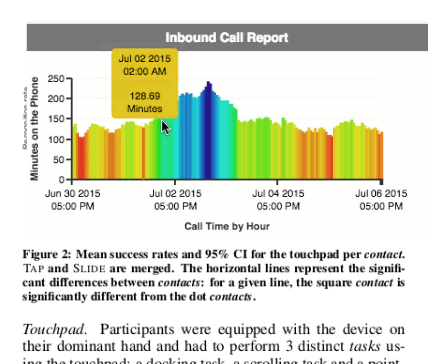Mjolnir: jobs and internships
If you would like to work with us, but none of the offers below match wich your qualification, your expertise or your expectations, you can contact Stéphane Huot (stephane.huot@inria.fr) to discuss other possible opportunities for joining the team.PhD

Command History as a Full-fledged Interactive Object
Funding to secure
Histories of command and their functionalities have undergone little evolution since their initial design, the ubiquitous "undo-redo", decades ago. In most applications today, the commands that contributed to a document are merely used as labels for intermediate document versions, while all the information used in their computation is forgotten as soon as the command is completed. This PhD project stems from the observation that this information is under-used, and forgotten too quickly; it aims at greatly increasing the navigating and editing capability of such systems. The goal is to treat the user's actions as full-fledged interactive objects, thus allowing users to edit and manipulate not only the most recent version of a document, but also its whole creation process. The thesis will propose new ways to navigate and exploit these augmented histories for content editing, error correction, and creative process sharing. The outcome of this project will be to augment the flexibility and operational vocabulary of interactive systems by including complete and interactive command histories at the lowest level of their design and use.
see the offer...

Direct manipulation with flexible devices
Funding to secure - cotutelle in collaboration with Audrey Girouard, Creative Interactions Lab at Carleton University (Ottawa, CA)
Human-Computer Interaction (HCI) research constantly explores new input and output modalities. Flexible devices are a relatively new approach that offers continuous input modality. Similarly to joysticks, flexible devices pertain to the category of elastic devices. They move back to their initial position when the user releases them. Depending on their elasticity, they either behave like an isotonic (like a mouse) or isometric device (like a trackpoint). In this thesis, the candidate will design, implement and evaluate new flexible devices and interaction techniques in relevant contexts an application domains to be identified (e.g., mobile interaction, creativity support tools, control with numerous degrees of freedom such as robotics, etc.). On a more theoretical perspective, he, or she, will study the relation between input actions and feedback (sensory-motor loop) in this very new and particular context, in order to inform the design of efficient flexible devices for direct manipulation.
see the offer...
Internships

From 3D graph to PDF
Master level - in collaboration with the start'up Zébrys
The latest versions of PDF allow to integrate 3D graphs that can be animated and manipulated (graphs-that-move). The production of these graphs is nevertheless a complicated task: construction of the graph using statistical analysis software, export, use of asymptote, then LaTeX. This process is quite inaccessible to a non-expert. Your mission will be to propose an interactive system for the production of animated 3D graphs that can be exported into a PDF file.
see the offer...

Intuitive code editor
Master level - in collaboration with the start'up Zébrys
Data analysis is a complex task that requires writing computer code. Indeed, in many critical contexts, an error could have serious consequences (such as estimating that a drug has no significant side effect when it has one). It is therefore essential to be able to check the statistical analyzes. Writing code is a difficult task. Because statisticians are not programmers, it is difficult for them to produce bug-free code. The objective of this internship is to propose and evaluate tools that will simplify the coding of data analysis process, facilitate its proofreading and allow easy debugging.
see the offer...

A Simulation Platform to Study Interaction Temporality
Master level
The project consists in designing and implementing a testbed to simulate typical graphical user interfaces (desktop, mobile, etc.) with minimal latency, to allow researchers fine control over different visual and temporal aspects of an interface's behavior. The goal is to produce a test platform that can be used for prototyping and in controlled experiments, for various research projects about the temporality of human-computer interactions (HCI).
see the offer...

Selection tool for handwritten text on bitmap pictures
Master level
Transcribing handwritten documents is a difficult task, which can benefit from digital tools. Ideally algorithms would analyse scans and output a text. However current methods require a learning base, and give better results with segmentation. This is why we would like to design, implement and evaluate an efficient pixel selection tool for this context. Users will be able to annotate selections and thus get a better understanding of the document structure.
see the offer...

Technology for detection of pianist fingerings
Master level
As part of their practice, pianists (professional or amateur) need to annotate the scores of the pieces they work on with the fingerings they will apply - i.e. which finger plays which note on which key. It is a long and tedious process because it can not be done automatically. The goal of this project is to design and test a hardware and software system that will automatically detect in real time the fingerings made according to a score being played. Ultimately, such a system would allow pianists to more easily annotate fingerings on their scores, and to help checking these fingerings while practicing or teaching.
see the offer...

Augmentating documents and applications by pixels analysis
Master 2
The content of many documents (for example pdf) can not be easily modified without the sources. It is the same for the large majority of applications we use every day, and which user interfaces are impossible to customize. The goal of this project is to enrich existing documents or modify the interface of existing applications without modifying the documents or the applications themselves. The principle is to perform real-time capture of the content displayed on screen and to apply computer vision algorithms to locate and augment certain parts of the interface.
see the offer...